Eco-Friendly Design in Autism Schools
Innovative Approaches to Sustainable Design for Autism Education

Eco-Friendly Design in Autism Schools
Exploring Eco-Friendly Initiatives in Autism Schools
Eco-friendly design in autism schools is a pivotal advancement, creating environments that cater to the unique sensory and educational needs of autistic students while also promoting sustainability. By utilizing green building practices and sensory-friendly designs, these schools not only enhance the learning experience but also foster well-being through thoughtful integration of natural elements and renewable energy solutions. This article delves into the essence and implementation of such eco-friendly practices and their profound impact on autism education.
Understanding Eco-Friendly and Autism-Friendly Design

What is eco-friendly design in architecture?
Eco-friendly design in architecture prioritizes sustainability and energy efficiency, emphasizing the use of environmentally friendly materials. These designs often incorporate features such as solar panels, green roofs, and advanced insulation techniques to reduce energy consumption and reliance on fossil fuels. By employing innovative building materials like bamboo and recycled steel, architects can significantly lower a building's carbon footprint.
Notable Examples:
- Pixel Building, Melbourne: A carbon-neutral structure.
- Bullitt Center, Seattle: Generates more energy than it consumes.
Modern eco-friendly designs enhance not only ecological balance but also urban life quality by maximizing natural light and integrating green spaces.
What is autism-friendly design?
Autism-friendly design aims to create spaces that cater to the unique sensory needs of individuals with Autism Spectrum Disorder (ASD). This involves meticulous adjustments in various aspects:
- Lighting: Utilizing dimmable, indirect LED fixtures alongside natural light to minimize overstimulation and avoiding harsh fluorescent lighting.
- Acoustics: Employing sound-absorbing materials and ensuring well-insulated spaces to keep noise disturbances at bay.
- Color and Texture: Incorporating calming colors and tactile surfaces that support sensory processing.
- Flexible Spaces: Creating layouts that provide students the choice to manage sensory experiences effectively.
Overall, the objective is to foster inclusive educational environments that improve focus, comfort, and learning opportunities for all students, especially those on the autism spectrum.
| Topic | Description | Importance |
|---|---|---|
| Sustainability | Focus on eco-friendly materials and practices | Reduces environmental impact |
| Energy Efficiency | Integrates renewable energy sources like solar power | Lowers utility costs, creates healthier spaces |
| Environmental Considerations | Enhances indoor air quality, soothing atmospheres | Supports well-being, aids learning |
The Impact of Eco-Friendly Design on Autism Education

How can eco-friendly design principles enhance educational environments for students with autism?
Eco-friendly design principles can significantly enhance educational environments for students with autism by creating spaces that are both calming and conducive to learning. By prioritizing natural lighting and minimizing the use of harsh fluorescent lights, which can cause discomfort due to flickering, schools can create a more soothing atmosphere. Natural light is not only beneficial for mood but also plays a role in improving cognitive function and sleep patterns for autistic students.
Incorporating acoustic treatments—such as carpets, acoustic ceilings, and sound-absorbing materials—can help manage noise levels effectively. This is crucial, as many autistic students are highly sensitive to auditory stimuli, which can lead to sensory overload and disrupt learning. Thoughtful space planning that includes designated quiet rooms and clearly defined areas for different activities supports navigation and comfort, helping students to decompress when necessary.
Furthermore, implementing calming color palettes may significantly reduce overstimulation. Colors like soft blues and greens can enhance relaxation, whereas overly bright or stimulating colors can increase anxiety. Effective signage with recognizable pictures aids in orientation, allowing students to move through their environments with greater ease and confidence, ultimately enhancing their educational experiences.
Additional Considerations in Eco-Friendly Design
- Sustainable Materials: Using low-VOC paints and recycled materials helps ensure better indoor air quality, contributing to health and well-being.
- Green Spaces: Incorporating outdoor sensory gardens allows students to engage with nature, which has therapeutic effects that can reduce stress.
- Assistive Technology: Integrating tech solutions tailored to individual needs supports varied learning styles, enhancing inclusivity and engagement.
- Collaborative Design: Involving occupational therapists and educators in the design process ensures that the environments meet the specific sensory and emotional needs of autistic learners.
Specific Strategies in Sustainable Design for Autism Schools
What specific strategies are used in sustainable design for autism-friendly schools?
Creating an autism-friendly environment through sustainable design involves implementing several specific strategies that cater to the unique needs of students with autism. One effective approach is the integration of sensory-friendly innovations in the architecture. This includes features like flexible seating arrangements that allow students to choose their comfort level, designating quiet zones for students needing to decompress, and visually organized spaces to reduce sensory overload.
Another important aspect is the emphasis on natural light. Harnessing daylight not only boosts mood but also enhances cognitive function, allowing students to focus better during lessons. Biophilic design, which incorporates plants and other natural materials, plays a vital role in creating a calming atmosphere that promotes engagement and reduces stress levels among autistic students.
Furthermore, the inclusion of renewable energy sources, such as solar panels, improves indoor air quality, minimizes noise pollution, and ultimately reduces operational costs. This creates a stable and supportive learning environment. Collaboration with occupational therapists is critical to ensuring spaces such as sensory rooms are tailored to individual student needs, promoting effective use of these calming environments.
Implementing the Universal Design for Learning (UDL) framework is another strategy that fosters inclusivity. UDL encourages diverse teaching methods and engagement styles, ensuring that the educational atmosphere supports all learners, especially those requiring specialized approaches.
| Strategy | Description | Benefits |
|---|---|---|
| Sensory-Friendly Innovations | Flexible seating, quiet zones, and organized spaces to cater to sensory needs | Reduces sensory overload |
| Natural Light Integration | Maximizing daylight in classrooms to enhance mood and focus | Improves academic performance |
| Biophilic Design | Use of plants and natural materials in classrooms | Lowers stress and promotes engagement |
| Renewable Energy Solutions | Installing solar panels for improved indoor air quality and reduced costs | Fosters a stable learning environment |
| Occupational Therapist Collaboration | Tailoring spaces for individual sensory needs | Enhances effectiveness of sensory areas |
| Universal Design for Learning | Diverse teaching methods for inclusivity | Supports varied learning styles |
These strategies demonstrate a comprehensive approach to creating eco-friendly, sensory-friendly educational environments for students with autism, promoting their well-being and enhancing their learning experience.
Importance of Indoor Environmental Quality (IEQ) for Autistic Students

How does indoor environmental quality affect the well-being and learning of autistic students?
Indoor environmental quality (IEQ) plays a critical role in the well-being and learning experiences of autistic students. Many of these individuals have heightened sensitivities to sensory inputs, making controlled IEQ essential in educational settings. Effective IEQ encompasses several factors:
- Acoustics: Sound-absorbing materials can minimize distractions from external noise, allowing students to concentrate better and engage in learning activities.
- Lighting: Natural light is preferred over harsh fluorescent options, as it improves mood while reducing glare and discomfort. The use of full-spectrum lighting can also help regulate melatonin levels, promoting better sleep patterns.
- Air Quality: Maintaining high indoor air quality (IAQ) is critical. Implementing ventilation systems that reduce allergens and pollutants helps create healthier environments, contributing to cognitive functioning and emotional stability.
Creating spaces that address these distinctive sensory needs not only benefits autistic students but also enhances the comfort of all inhabitants, fostering an inclusive and supportive learning atmosphere. By prioritizing IEQ, schools can significantly improve overall student autonomy and participation, leading to positive educational outcomes.
Integrating Renewable Energy in Autism Schools

What specific strategies are used in sustainable design for autism-friendly schools?
Incorporating renewable energy solutions is pivotal in creating autism-friendly educational environments. These strategies not only minimize operational costs but also foster positive behavioral changes among students. For instance, solar panels and wind turbines can significantly reduce noise levels, creating calm and quiet spaces conducive to learning.
Using renewable energy sources such as solar technology leads to improved indoor air quality. This is particularly beneficial for students with sensory sensitivities, whose learning can be adversely affected by poor air conditions. Solar energy systems also help in reducing carbon emissions, enhancing the overall environmental quality—an essential factor in promoting well-being among autistic learners.
As schools prioritize their ecological footprints, the seamless integration of renewable energy can transform spaces into healthier environments. This commitment not only contributes to sustainable practices but also nurtures an educational atmosphere where autistic children thrive.
Environmental benefits
Implementing renewable energy in autism schools brings manifold environmental benefits:
| Benefit | Description | Impact on Students |
|---|---|---|
| Enhanced Air Quality | By using renewable systems, schools often see a substantial improvement in indoor air quality. | Reduces sensitivities and health issues, allowing better focus. |
| Lower Emissions | The shift to eco-friendly energy sources helps in significantly lowering harmful emissions. | Creates a healthier, less polluting space, supporting better learning conditions. |
| Reduced Noise Pollution | Renewable energy systems typically operate quieter than traditional systems, enhancing the learning environment. | Reduces distractions, catering to students' sensory processing needs. |
Through these environmental benefits, the incorporation of renewable energy in autism schools not only supports educational goals but also enhances the overall experience for students with autism.
The Role of Occupational Therapists in Autism School Design
What role do occupational therapists play in designing supportive environments for autistic individuals?
Occupational therapists are instrumental in creating supportive and effective learning environments for students with autism. Their expertise is particularly valuable in addressing the unique sensory processing challenges these individuals face. By actively assessing and understanding each student's specific sensory needs, they develop personalized interventions that can greatly enhance comfort and learning.
One of the primary contributions of occupational therapists is the creation of tailored sensory diets, which include activities and tools to help manage sensory sensitivities. For example, they might recommend sensory integration therapy techniques aimed at improving self-regulation skills and focus. This can significantly aid students by enabling them to navigate their educational settings more successfully.
In addition to individual interventions, occupational therapists work closely with families, educators, and other professionals to ensure a holistic approach to support. This collaboration is essential for providing consistent assistance across various environments such as home and school.
By empowering students with autism to develop crucial life skills—like communication, self-care, and social interactions—occupational therapists promote greater independence and improved quality of life. Their work creates spaces that not only accommodate sensory needs but also celebrate the strengths and preferences of each autistic student.
Biophilic Design: An Essential Component in Autism Schools
What are the benefits of biophilic design in autism schools?
Biophilic design incorporates natural elements into educational settings, providing various benefits for students with autism. By integrating natural light, plants, and outdoor spaces, this design approach creates an environment that significantly lowers stress levels and enhances cognitive functions.
- Stress Reduction: Access to natural elements like greenery has been shown to decrease anxiety and promote relaxation, which is essential for autistic students who may experience heightened sensory sensitivities.
- Enhanced Learning Outcomes: The presence of natural light in classrooms contributes to improved mood and focus, positively impacting academic performance.
- Increased Engagement: Spaces designed with biophilic principles exhibit a greater capacity to capture the attention of students, making learning more engaging and enjoyable.
How do natural elements impact students with autism?
Natural elements play a pivotal role in shaping the experiences of students with autism.
- Therapeutic Benefits: Incorporating biophilic design reduces stress through soothing colors and textures, which can help autistic children feel more comfortable and secure.
- Connection to Nature: Outdoor sensory gardens support physical activity and sensory exploration, creating fulfilling experiences that enhance emotional well-being.
- Calming Effects: The strategic use of plants, varying textures, and natural light creates a serene atmosphere, inherently promoting a sense of calm that caters to the unique sensory needs of autistic learners.
Overall, biophilic design not only enhances the aesthetic appeal of autism schools but also significantly contributes to the well-being and academic success of neurodiverse students, paving the way for more inclusive and supportive learning environments.
Innovative Outdoor Spaces for Autism Education
Eco-friendly Outdoor Areas
Creating eco-friendly outdoor spaces is vital for autism education. Sensory gardens, for example, are designed with diverse plant life and textured pathways that engage students' senses. These gardens are not only calming but also offer sensory exploration, effectively blending nature into the learning environment.
Safe play areas equipped with natural materials encourage physical activity, allowing students with autism to engage freely. Using materials like wood and stone creates a tactile experience while also ensuring safety and comfort. Furthermore, these eco-conscious spaces support sustainability, helping students learn about environmental stewardship.
Engagement Through Nature
Incorporating biophilic design—elements that connect students with nature—has shown significant improvements in engagement levels for autistic students. Natural light from large windows and shaded play areas fosters a sense of calm, while design configurations promoting exploration can boost social interactions and peer connections.
Research suggests that exposure to natural elements can reduce stress and enhance cognitive function. By prioritizing outdoor environments that are not only educational but nurturing, autism-friendly schools are transforming how students interact with their surroundings, thus fostering a supportive and inviting atmosphere for learning.
Stakeholder Involvement in Autism School Design
Student and Family Input
Incorporating the perspectives of students and their families is crucial in designing autism-friendly schools. Directly engaging learners allows educators and designers to gather insights about specific needs related to sensory experiences and emotional regulation. Students can provide feedback on different spatial configurations, colors, and materials that enhance their comfort and learning. Family input is equally important, ensuring that the design reflects the priorities and aspirations of students' home environments.
Collaborative Design Process
A collaborative design approach brings together teachers, occupational therapists, parents, and students to create supportive educational spaces. Workshops and feedback sessions can be organized to discuss features like sensory rooms, outdoor learning areas, and classroom layouts that promote engagement and reduce stress. Through this teamwork, the design process becomes more inclusive, catering to the unique experiences and reactivity patterns of autistic individuals.
Importance of Integrated Models
The integration of stakeholder feedback into the design framework fosters spaces that are not just functional but also nurturing and inspiring. An integrated model promotes familiarity and predictability in environments while ensuring that design choices resonate with the needs of those they serve. Ultimately, this collaborative effort can lead to innovative solutions that drastically enhance the educational experience for students with autism.
The Future of Sustainable Design in Autism Schools

Emergent trends
As the focus on eco-friendly design grows, autism schools are increasingly adopting sustainable practices. Notable trends include the integration of renewable energy sources, such as solar and wind power, which not only cut costs but also create healthier learning environments. By implementing energy-efficient systems, schools can enhance indoor air quality, benefiting students sensitive to environmental factors.
Biophilic design is gaining traction, emphasizing the use of natural elements like plants and adequate natural light. These features have been shown to lower stress levels and enhance cognitive function, contributing to improved academic performance for students with autism.
Future applications
The future of autism school design lies in prioritizing flexibility and user-centered approaches. Universal Design for Learning (UDL) will continue to play a critical role, allowing educators to adapt teaching methods to various learning styles. Sustainable architecture will also increasingly focus on creating sensory-friendly spaces, utilizing sound-absorbing materials and adaptive lighting to reduce sensory overload.
Partnerships with occupational therapists will drive the development of tailored sensory environments, fostering more inclusive and supportive settings. As schools invest in technology integration, assistive tools will further enhance student engagement, paving the way for thriving, eco-conscious educational environments.
Challenges and Solutions in Implementing Eco-Friendly Designs
Overcoming obstacles
Implementing eco-friendly designs in autism schools presents unique challenges. One significant hurdle is the initial cost of sustainable materials and technologies, which can deter schools from adopting green practices. Additionally, there's often a lack of awareness or training among educators and administrators about the specific needs of autistic students in relation to eco-friendly design. Furthermore, balancing sensory needs with sustainable choices can be complex, as not every green material may be sensitive to the unique challenges faced by these students.
Practical solutions
Despite these obstacles, several practical solutions can facilitate the adoption of eco-friendly designs. Collaboration among stakeholders—educators, occupational therapists, parents, and architects—is critical for understanding and addressing the specific needs of autistic students. Schools can prioritize energy-efficient installations like LED lighting and improved HVAC systems, which not only create healthier learning environments but also reduce long-term utility costs. Educators can engage students in sustainability initiatives, fostering a culture of environmental stewardship that also aligns with their learning objectives. Moreover, gradually integrating sensory-friendly features—such as soft colors and natural materials—can enhance the overall school environment while supporting eco-friendly practices.
The Path Forward in Eco-Friendly Autism School Design
Eco-friendly design practices in autism schools mark a significant step in fostering educational environments tailored to the distinct needs of neurodiverse students. By prioritizing sustainable, sensory-friendly solutions, these institutions not only enhance academic outcomes but also promote holistic well-being. Embracing advances in renewable energy, biophilic elements, and comprehensive stakeholder collaboration ensures these schools remain at the forefront of both educational and environmental innovation, paving the way for future generations.
References
- Creating Harmony: Eco-Friendly Design Practices in Autism Schools
- Eco-Friendly Design in Autism Schools - B Above Services
- Green building design for autism schools - Cross River Therapy
- Eco-Friendly Design in Autism Schools - Total Care ABA Therapy
- Green Building Solutions for Autism Schools
- Eco-Friendly Design in Autism Schools - Bridge Care ABA Therapy
- Eco-Friendly Design in Autism Schools - At-Home ABA Therapy For ...
- Energy efficiency for autism schools and facilities
- Green Building Design For Autism Schools - Supportive Care ABA
- Renewable Energy for Autism Friendly Schools - Yellow Bus ABA
Frequently Asked Questions
.jpg)
Autism And Bed Wetting: Unlocking Solutions
Explore the connection between autism and bedwetting and find practical insights and solutions for parents and caregivers. Discover how understanding and support can make a difference in managing this common challenge for children and individuals on the autism spectrum.

Proven Examples of Smart Goals for Students with Autism
Unlock the potential of students with autism through proven examples of SMART goals. Set them up for success!
.jpg)
What is the Sensory Processing Disorder ICD-10 Code?
If you or someone you know has been diagnosed with Sensory Processing Disorder (SPD), you may have heard of the ICD-10 code. In this article, we'll explain what the SPD ICD-10 code is, what it means, and why it's important.

Understanding Vestibular Stimming in Autism
Demystifying vestibular stimming in autism: Understand the impact, strategies, and support for individuals. Uncover the power of self-regulation through stimming.

Do Amish Kids Get Autism?
Explore the prevalence of autism in Amish children and uncover the factors that may contribute to this phenomenon. Delve into the unique characteristics of Amish communities and their impact on autism rates.

Breaking Barriers: Free Sensory Toys for Autism That Make a Difference
Discover life-changing free sensory toys for autism! Unlock the power of sensory play for children with autism.

Famous People Thriving with Autism or Aspergers Syndrome
Discover the extraordinary journeys of famous people thriving with autism and Asperger's syndrome. Unveil the inspiring stories of icons who break stereotypes.

IEP Goals for Autism: Ultimate Guide
Unlock the potential: Constructing meaningful IEP goals for autism to support your child's growth and development. Discover strategies and examples!

Young Celebrities with Autism
Discover inspiring young celebrities with autism and their journeys in entertainment and advocacy.
.jpg)
Autism Hand Posturing: Causes, Types, and Management
Autism hand posturing refers to repetitive and often purposeless movements or postures of the hands and fingers seen in individuals with autism. These movements range from simple hand flapping to more complex finger twisting and tapping.

Distinguishing ADHD vs Autism Stimming
ADHD stimming vs autism stimming: Discover the motivations and characteristics behind these behaviors in individuals.

Addressing Rigid Thinking in Autism
Unlocking flexibility in autism! Discover strategies, therapy, and tools to address rigid thinking for a brighter future.

DSM 6 Release Date Revealed
Unlock the future with DSM-6! Discover the release date and anticipated changes in the mental health landscape.

Why Do Autistic People Rock?
Uncover insights with empathy, exploring the diverse ways rocking serves as a coping mechanism and sensory regulation for individuals on the autism spectrum. Join us in celebrating the beauty of neurodiversity, fostering understanding and appreciation for this distinctive aspect of autistic experience.

Signs Your Toddler Is Not Autistic
Discover reassuring signs that your toddler may not be autistic in this human-centered guide. Explore the joy of your child's unique developmental journey, celebrating their social engagement and communication skills.
.jpg)
Facial Features & Physical Characteristics Of Autism
Some researchers believe that these physical characteristics are related to the underlying neurological differences in individuals with autism.

The Three Main Causes of Autism: Exploring Genetics, Environment, and Brain Differences
Autism is influenced by genetics, environmental factors, and brain differences. Learn how these three causes contribute to the development of the condition.

What are the Common Behaviors of Autism?
Autism behaviors can vary widely. Learn about the most common traits, from social difficulties to sensory sensitivities, and how ABA therapy can support progress.

What Age is Too Late for ABA Therapy?
It’s never too late to start ABA therapy. Discover how children, teens, and adults can still make meaningful progress with personalized ABA support.

Is In-Home ABA the Right Fit for Your Child? Here’s What You Need to Know
In-home ABA therapy offers a tailored approach to support your child’s development. Learn how it can improve key skills like communication, social interaction, and more.

How Families Can Make ABA Therapy a Positive and Successful Experience
Learn how families can ensure ABA therapy is a positive, successful experience. Discover tips for involvement, consistency, and support to make ABA effective.

Can a Child Have Autism and Still Talk Normally?
Can a Child Have Autism and Still Talk Normally?

What Are the Red Flags for Autism in a 2-Year-Old?
Autism Red Flags in 2-Year-Old Children | Apex ABA

Is Autism a Lifelong Condition?
Is Autism a Lifelong Condition? Understanding The Journey

Best Age to Start ABA Therapy & What Parents Should Know
Best Age to Begin ABA Therapy for Children | Apex ABA

What’s the Difference Between High-Functioning Autism and Asperger’s?
Difference Between High-Functioning Autism and Asperger’s

ABA Therapy Enhancing Social Skills: A Key to Improved Communication and Interaction for Children with Autism
How ABA Therapy Helps Children Build Social Skills

Misconceptions About ABA Therapy: Clearing Up the Myths
Common Misconceptions About ABA Therapy | Apex ABA

What Does It Mean to Be “On the Spectrum”?
What Does It Mean to Be on the Autism Spectrum? | Apex ABA
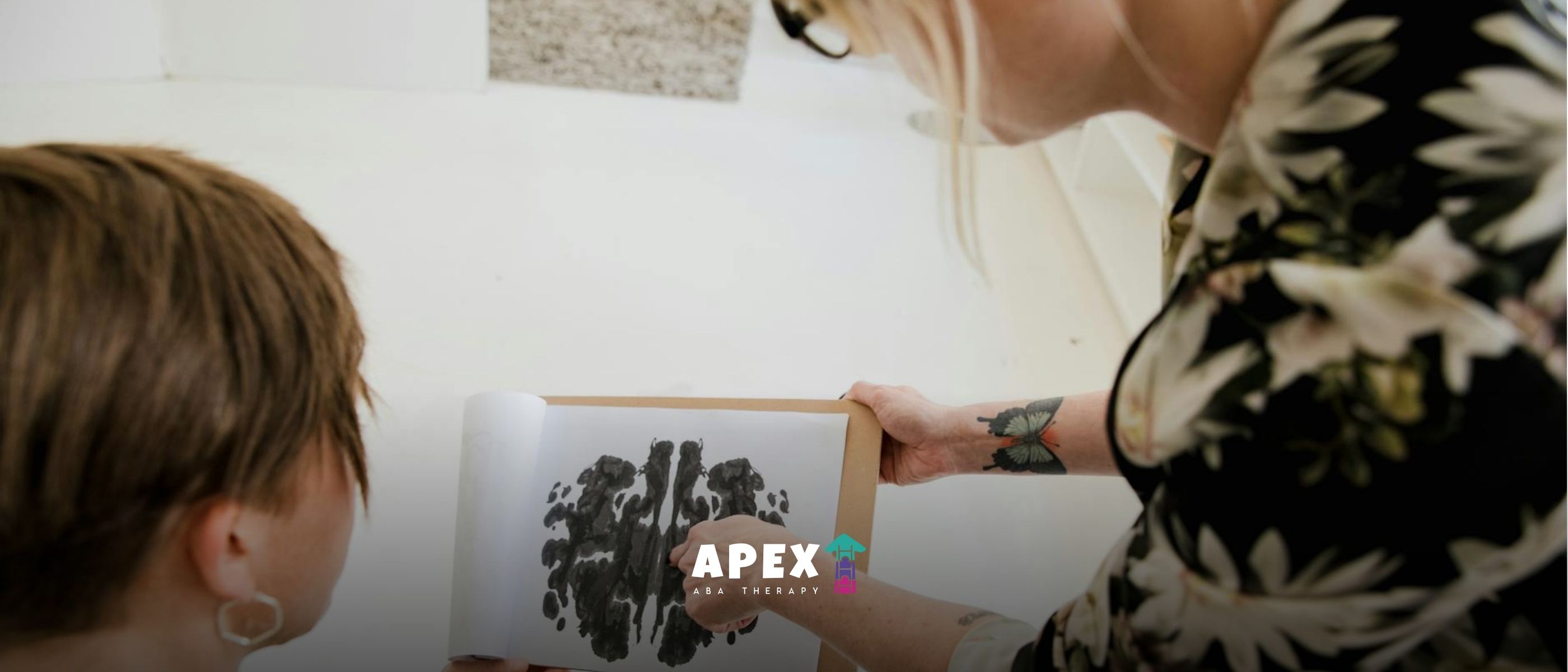
Understanding the Power of Functional Behavior Assessment ABA
Effective ABA Techniques for Behavioral Intervention

Discover How ABA Helps ADHD in Your Child’s Life
How ABA Therapy Helps Children with ADHD | Apex ABA

Life-Changing ABA Therapy Case Studies You Need to Know
Real Success Stories from ABA Therapy Journeys | Apex ABA

Can Children “Outgrow” Autism?
Can Children Outgrow Autism? Understanding the Facts
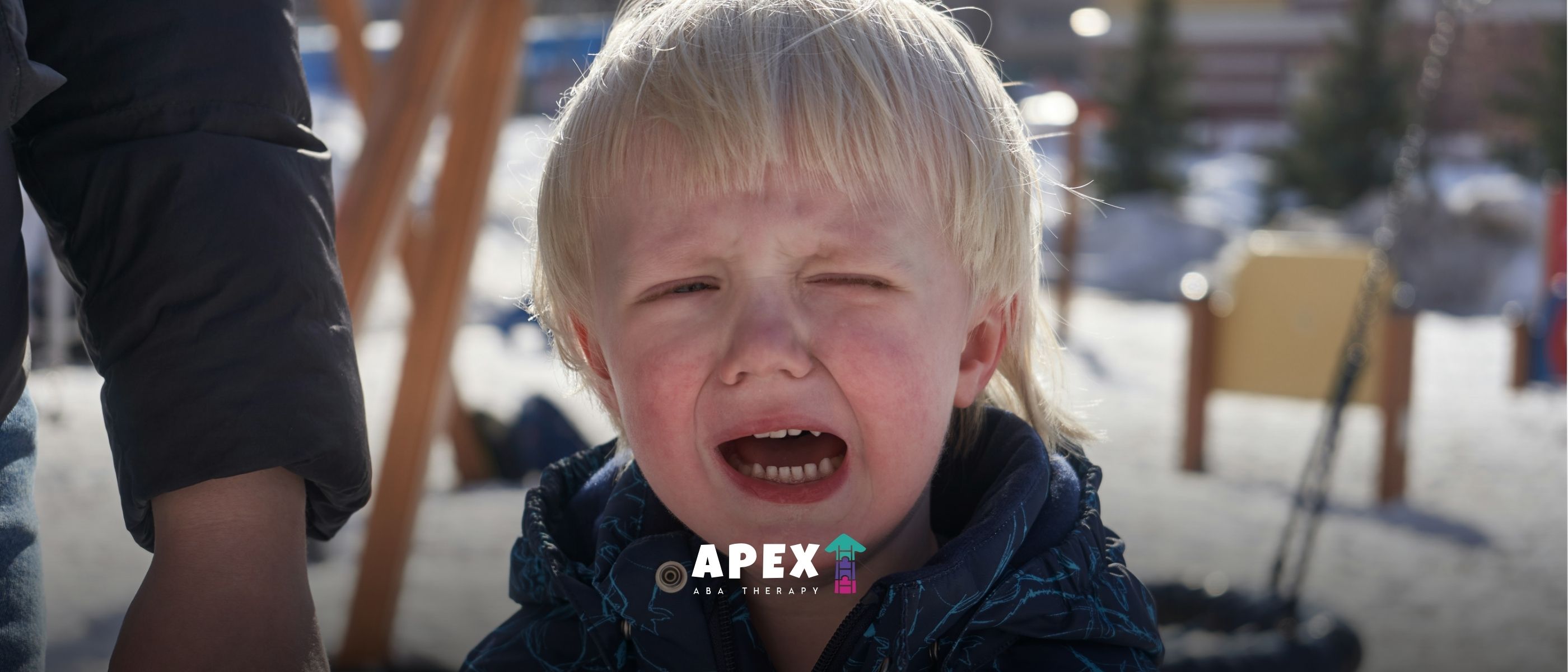
Is Autism a Mental Illness or a Developmental Disorder?
Mental Illness or Developmental Disorder Explained

Is Autism More Common in Boys Than Girls?
Autism in Boys vs Girls: What the Research Reveals

What is the Difference Between Autism and Sensory Processing Disorder?
Autism vs Sensory Processing Disorder Differences | Apex ABA

What's the Difference Between Autism and Speech Delay?
Autism vs Speech Delay & Key Differences Explained | Apex
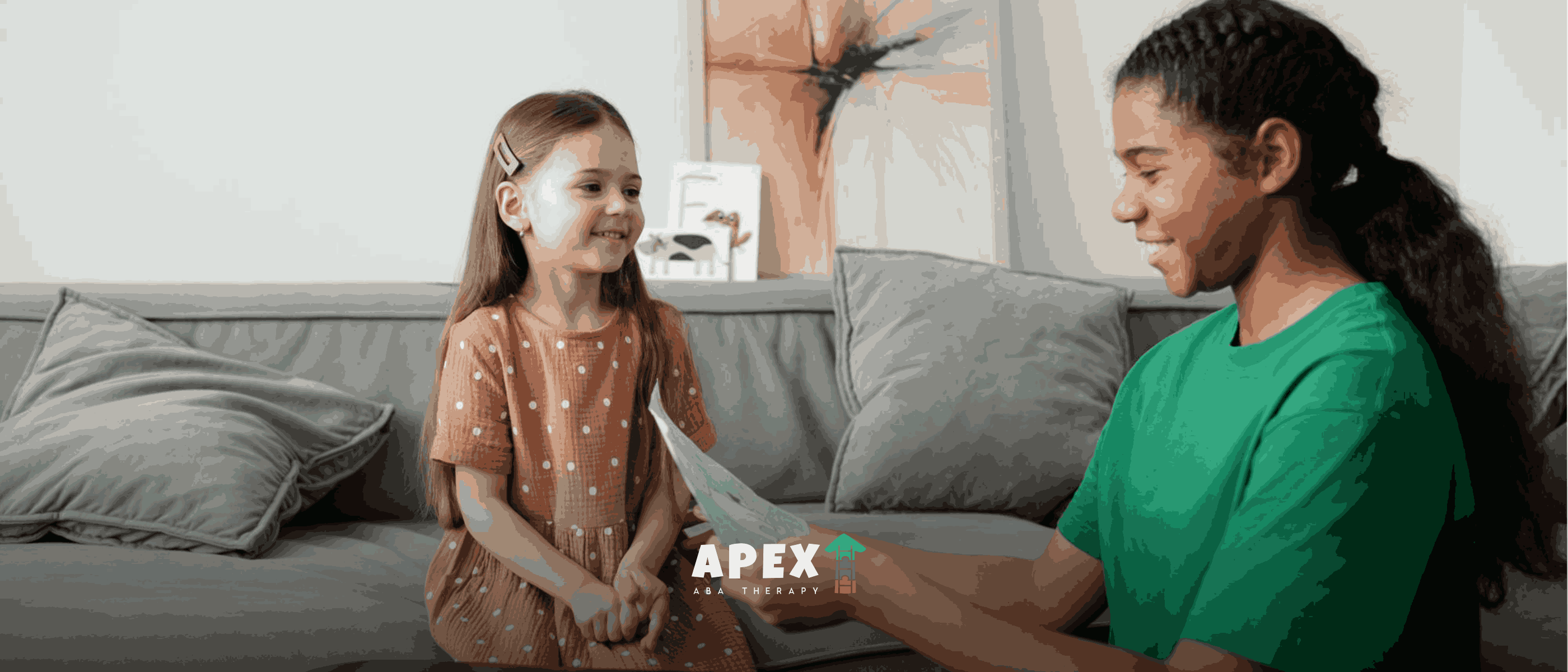
ABA Therapy in North Carolina: A Complete Guide for Families
Learn everything about ABA therapy in North Carolina, including services, costs, insurance coverage, and how to choose the best ABA provider in North Carolina.
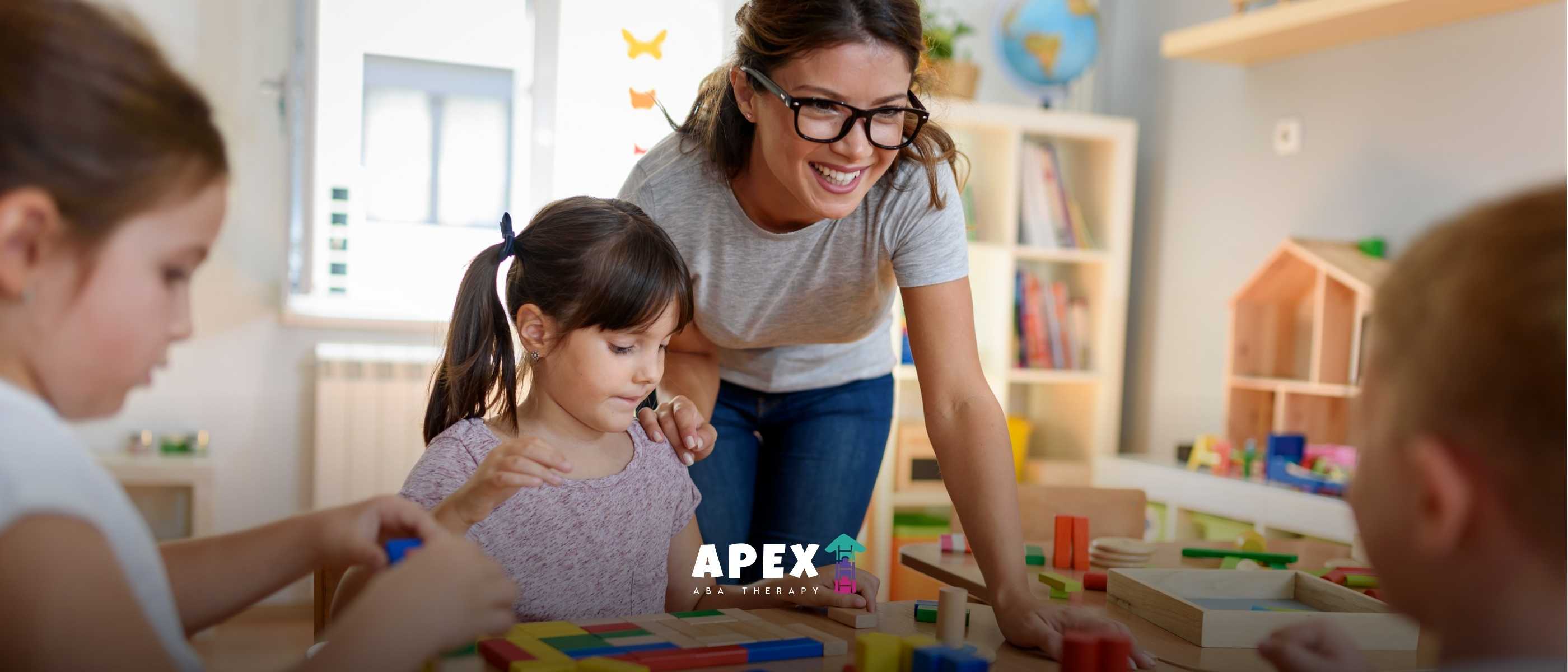
ABA Therapy vs Preschool: Making the Right Choice Explained
Learn the key differences between ABA therapy and preschool to help you choose the best option for supporting your child’s early learning and development.

Which Personality Type Is Most Likely to Be Autistic?
Which Personality Type Is Most Likely to Be Autistic? | Apex ABA

Why Consistency Matters: What Happens If ABA Therapy Ends Prematurely
What Happens If ABA Therapy Is Stopped Too Early? | Apex ABA

How Can You Gain an Autistic Person’s Attention? Tips for Meaningful Connection
How Can You Gain an Autistic Person’s Attention?

Sensory Sensitivity and Sixth Sense: What Autism Research Shows
Do Autistic People Have Sixth Sense? | Apex ABA
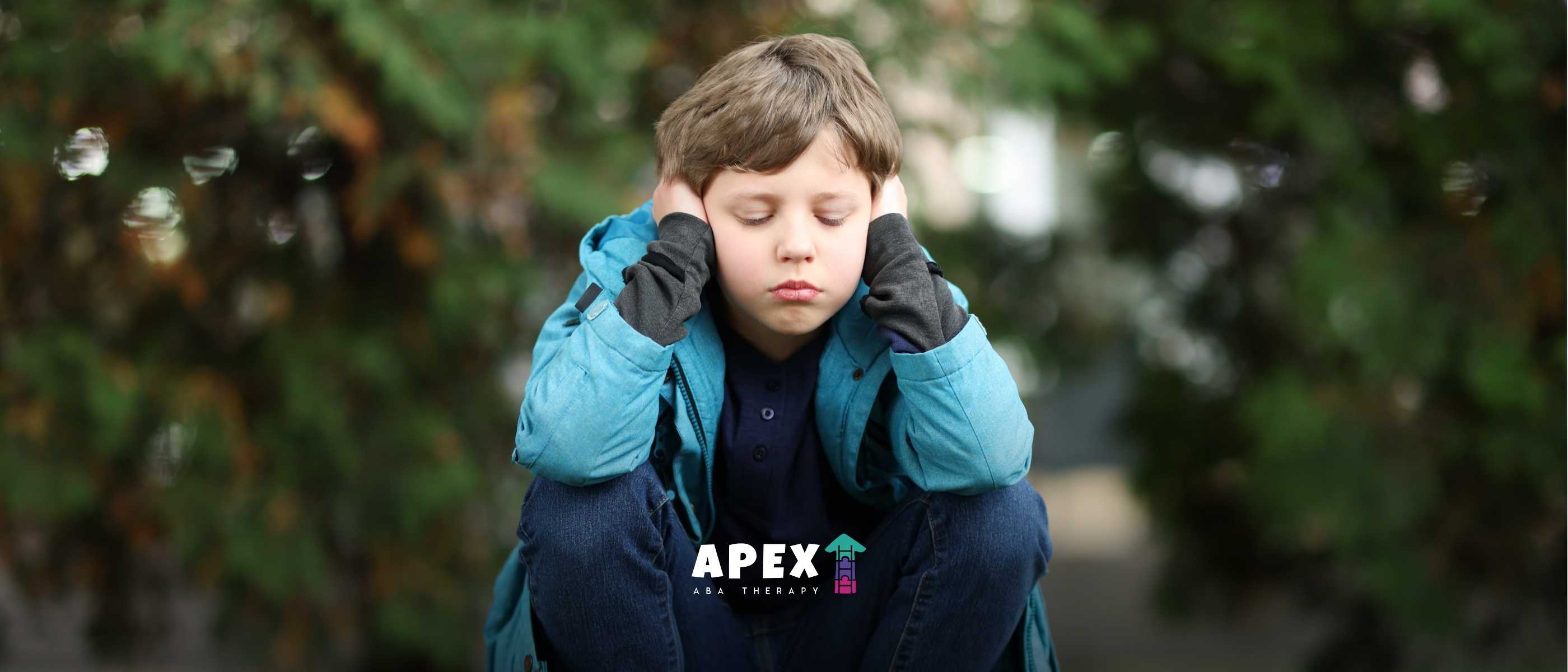
What Happens If Autism Is Left Untreated?
Can Autism Get Worse If Untreated? | Apex ABA

What Not To Do With An Autistic Child: Avoid These 10 Mistakes
What Not To Do With An Autistic Child? | Apex ABA

Coping with Regressive Autism: Tips for Parents
What is Regressive Autism? | Apex ABA

Do Autistic Kids Live with Parents Forever? Here’s the Reality
Do autistic kids live with parents forever? Discover the facts about independence and living arrangements in autism with expert-backed insights.

Red Flags in ABA Therapy: What Parents Must Watch For
What are the red flags in ABA therapy? Learn to identify warning signs for safe, effective autism treatment in this blog.

Can You Go from Level 3 Autism to Level 1? Is It Possible?
Can you go from level 3 autism to level 1? Learn about progress, therapy, and support options with expert help from Apex ABA.

Autism vs Introversion: How to Tell the Difference
Is it autism or just introversion? Learn the key differences and signs with expert insights from Apex ABA.
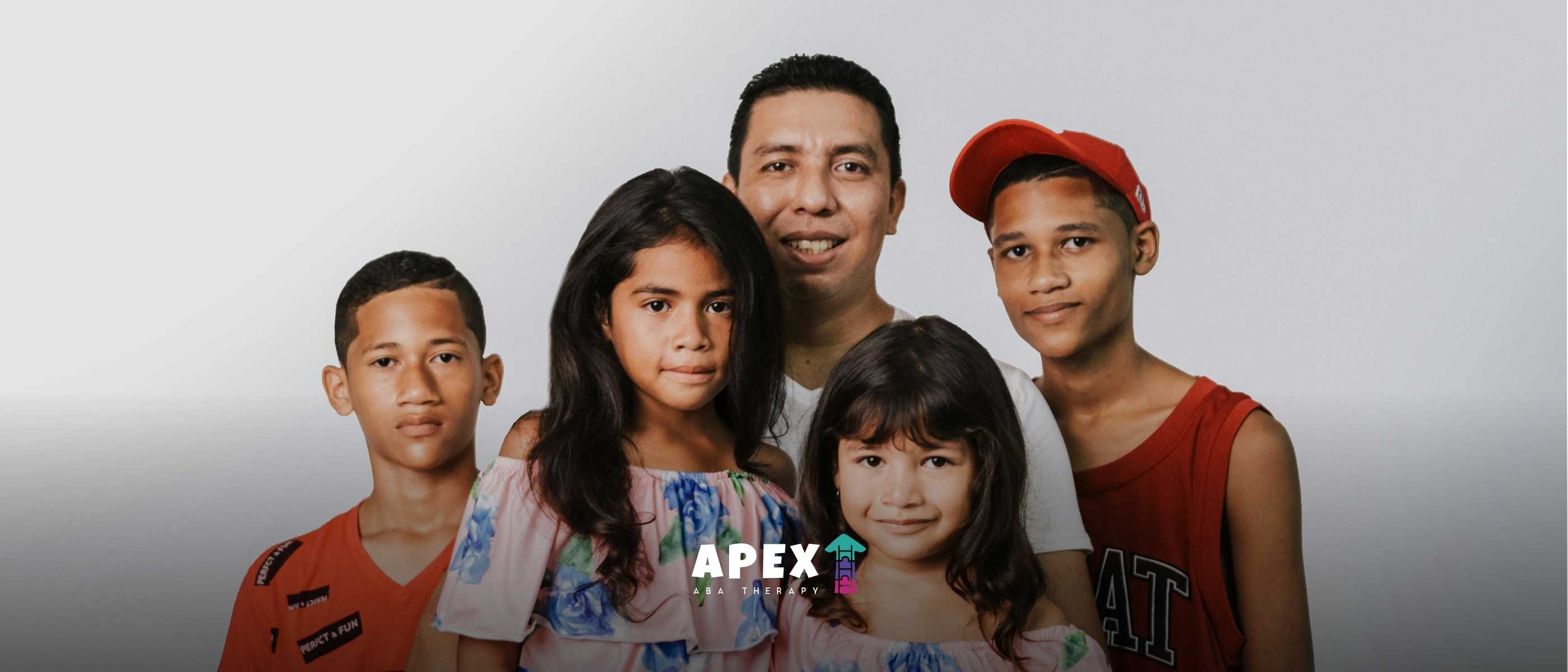
ABA for Managing Transitions: Tips to Ease Change for Kids
Learn how ABA for managing transitions helps children with autism handle change smoothly.

Understanding the 7 Dimensions of ABA for Better Outcomes
Discover the 7 Dimensions of ABA and how they can lead to better outcomes.

5 Unique Autistic Love Languages You Should Know About
Discover the 5 unique autistic love languages that can enhance your relationships.

Transforming Futures: Improving Lives of Kids with Autism
Discover how innovative strategies are focused on improving lives of kids with autism.

ABA Therapy Techniques for Addressing Repetitive Behaviors in Autism
Harnessing ABA Strategies to Tackle Repetitive Behaviors in Autism

The Role of ABA Therapy in Enhancing Communication Skills
Transforming Communication for Children with Autism Through ABA Therapy

How ABA Therapy Supports Effective Communication in Nonverbal Children
Unlocking Speech Through ABA: Transformative Paths for Nonverbal Children

How to Help Your Child Transfer Skills Learned in ABA Therapy to Real Life
Unlocking Real-World Success for Children in ABA Therapy

How ABA Therapy Helps Children Develop Better Organizational Skills
Empowering Children with ABA Therapy for Enhanced Organizational Skills

The Importance of Creating a Structured Routine in ABA Therapy
How Structured Routines Transform ABA Therapy for Autism

The Role of ABA Therapy in Developing Conflict Resolution Skills
How ABA Therapy Transforms Conflict Resolution Competence

The Importance of Generalization in ABA Therapy for Autism
Unraveling the Role of Generalization in Enhancing ABA Therapy Outcomes

Why ABA Therapy is Crucial for Parents of Children with Autism
The Transformative Impact of ABA Therapy on Families with Autistic Children

How to Involve Parents in the ABA Therapy Process
Maximize Parent Engagement in ABA Therapy for Better Outcomes

What are the Core Principles of ABA Therapy?
Exploring the Cornerstones of Applied Behavior Analysis

Why Communication is Key in ABA Therapy for Autism
The Crucial Role of Communication in ABA Therapy for Autism

Why ABA Therapy Works for Children with Autism Regardless of Severity
Effective ABA Interventions for All Levels of Autism

Why It’s Important to Maintain a Balanced Approach to ABA Therapy
Balancing Effectiveness and Ethics in ABA Therapy

The Role of ABA Therapy in Developing Adaptive Behavior Skills
Exploring How ABA Therapy Transforms Lives

The Benefits of Combining ABA Therapy with Speech Therapy
Maximizing Development with Integrated Therapy Approaches

What to Expect During an ABA Therapy Session
Demystifying ABA Therapy Sessions: A Comprehensive Overview

How ABA Therapy Enhances Cognitive Functioning in Children with Autism
Exploring the Influence of Applied Behavior Analysis on Autism Cognition

How ABA Therapy Helps Children with Autism with Transitions Between Activities
Easing Transitions for Children with Autism: The Role of ABA Therapy

How to Foster Cooperation Between Parents and Therapists in ABA Therapy
Building Effective Partnerships in ABA Therapy

The Role of Positive Reinforcement in ABA Therapy
Exploring the Impact of Positive Reinforcement in Modern ABA Therapy

Why ABA Therapy is Effective for Children of All Ages
Understanding the Reach and Impact of ABA Therapy Across Age Groups

How to Support Your Child’s Emotional Growth with ABA Therapy
Harnessing ABA Therapy for Enhancing Emotional Development in Children with Autism

The Role of ABA Therapy in Enhancing Peer Relationships for Children with Autism
Harnessing ABA Therapy to Boost Social Connections Among Autistic Children

How to Overcome Common Challenges in ABA Therapy
Navigating Hurdles in ABA Therapy: Strategies and Solutions

How to Manage Behavioral Expectations with ABA Therapy
Understanding Applied Behavior Analysis in Behavioral Management

How ABA Therapy Promotes Emotional Regulation in Children with Autism
Unlocking Emotional Balance: ABA Therapy's Role in Autism

How ABA Therapy Improves Social Skills in Children with Autism
Harnessing ABA Therapy to Enhance Social Competency in Autistic Children

The Role of ABA Therapy in Classroom Success for Children with Autism
Harnessing ABA for Academic and Social Growth in Autism

The Importance of Evaluating and Revising ABA Therapy Goals Regularly
Regular Evaluations: The Cornerstone of ABA Therapy Success

How to Choose the Right ABA Therapy Program for Your Child
Finding the Perfect ABA Therapy Fit for Your Child

The Role of Behavior Analysts in Implementing ABA Therapy
Understanding the Vital Contributions of Behavior Analysts in ABA Therapy

The Role of RBTs (Registered Behavior Technicians) in ABA Therapy
A Closer Look at the Essential Work of RBTs in ABA Therapy

What Makes ABA Therapy Effective for Different Learning Styles?
Unraveling the Flexibility and Effectiveness of ABA Therapy

Understanding the Importance of Data Collection in ABA Therapy
The Role of Data in Shaping Effective ABA Therapy

How ABA Therapy Helps with Toilet Training in Children with Autism
Unlocking Independence: ABA's Role in Autism Toilet Training

The Importance of Encouraging Natural Play in ABA Therapy
Revolutionizing ABA Therapy with Natural Play

How to Make the Most of ABA Therapy at Home
Enhancing ABA Therapy Practices Within Your Home

How to Make ABA Therapy Fun and Engaging for Children with Autism
Transforming ABA Therapy into a Fun Learning Journey

The Role of ABA Therapy in Addressing Verbal and Nonverbal Communication in Autism
Enhancing Communication Skills in Autism Through ABA Therapy

Understanding the Role of Family in ABA Therapy for Autism
The Crucial Impact of Family Engagement in Autism Therapy

How to Handle Setbacks and Challenges in ABA Therapy
Navigating Difficulties and Setbacks in ABA Therapy for Children

How ABA Therapy Can Help Children Build Stronger Relationships with Peers
Unpacking the Influence of ABA Therapy on Peer Relationships in Children

Understanding the Concept of Shaping in ABA Therapy
Demystifying Shaping Techniques in Applied Behavior Analysis

How ABA Therapy Enhances Independent Living Skills in Autism
Unlocking Independence: The Role of ABA Therapy in Autism
.jpg)
90+ Reading Statistics, Facts and Demographics
In this article, we will dive into 60 reading statistics that shed light on the importance of reading and its impact on different aspects of life.



